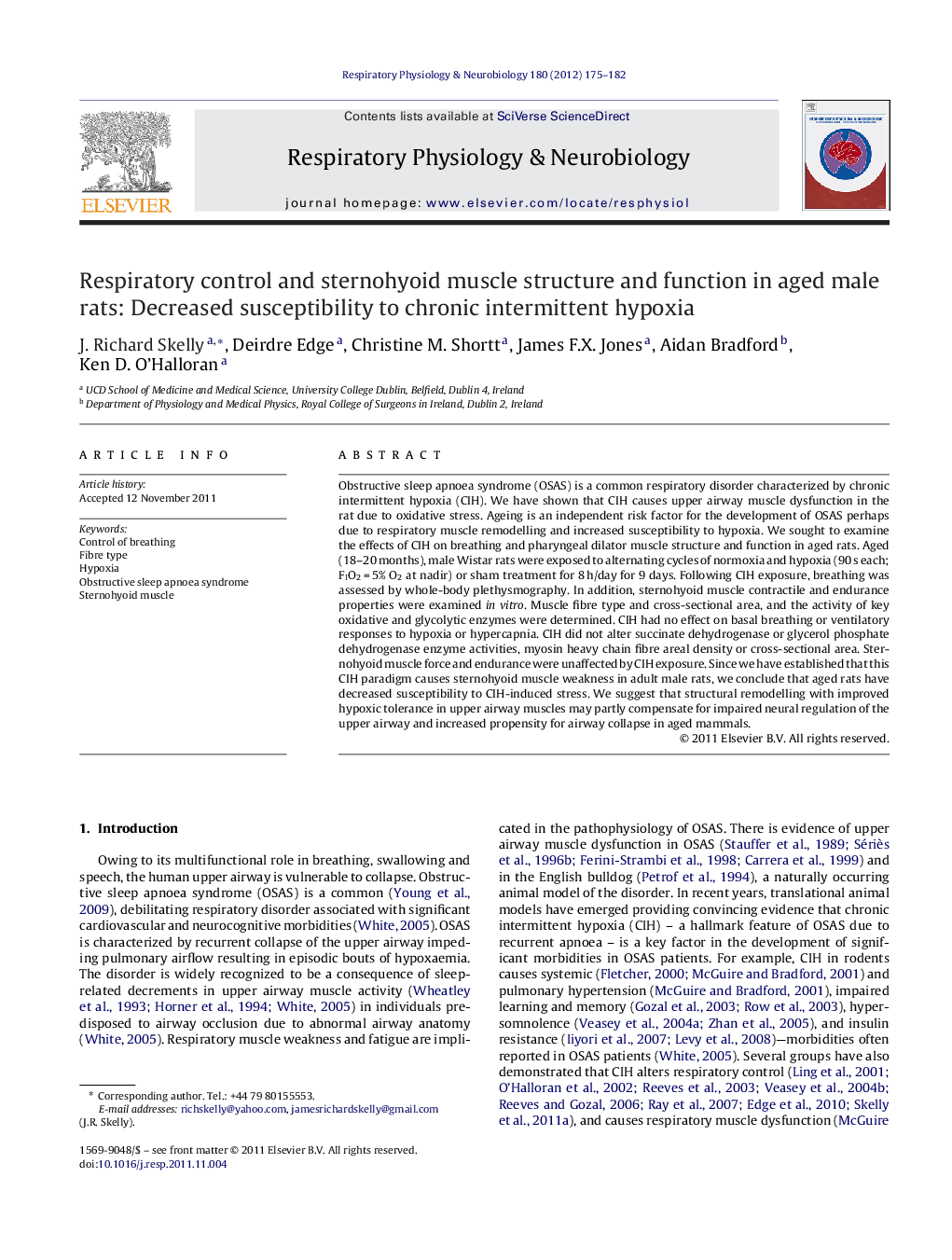| کد مقاله | کد نشریه | سال انتشار | مقاله انگلیسی | نسخه تمام متن |
|---|---|---|---|---|
| 5926319 | 1571340 | 2012 | 8 صفحه PDF | دانلود رایگان |

Obstructive sleep apnoea syndrome (OSAS) is a common respiratory disorder characterized by chronic intermittent hypoxia (CIH). We have shown that CIH causes upper airway muscle dysfunction in the rat due to oxidative stress. Ageing is an independent risk factor for the development of OSAS perhaps due to respiratory muscle remodelling and increased susceptibility to hypoxia. We sought to examine the effects of CIH on breathing and pharyngeal dilator muscle structure and function in aged rats. Aged (18-20Â months), male Wistar rats were exposed to alternating cycles of normoxia and hypoxia (90Â s each; FIO2Â =Â 5% O2 at nadir) or sham treatment for 8Â h/day for 9 days. Following CIH exposure, breathing was assessed by whole-body plethysmography. In addition, sternohyoid muscle contractile and endurance properties were examined in vitro. Muscle fibre type and cross-sectional area, and the activity of key oxidative and glycolytic enzymes were determined. CIH had no effect on basal breathing or ventilatory responses to hypoxia or hypercapnia. CIH did not alter succinate dehydrogenase or glycerol phosphate dehydrogenase enzyme activities, myosin heavy chain fibre areal density or cross-sectional area. Sternohyoid muscle force and endurance were unaffected by CIH exposure. Since we have established that this CIH paradigm causes sternohyoid muscle weakness in adult male rats, we conclude that aged rats have decreased susceptibility to CIH-induced stress. We suggest that structural remodelling with improved hypoxic tolerance in upper airway muscles may partly compensate for impaired neural regulation of the upper airway and increased propensity for airway collapse in aged mammals.
⺠Chronic intermittent hypoxia (CIH) has no effect on baseline ventilation or ventilatory responses to acute hypoxia or hypercapnia. ⺠Sternohyoid (upper airway dilator) muscle myosin heavy chain fibre type and size, succinate dehydrogenase and glycerol-3-phosphate dehydrogenase enzyme activities are unaffected by CIH. ⺠CIH does not alter aged sternohyoid muscle force or fatigue.
Journal: Respiratory Physiology & Neurobiology - Volume 180, Issues 2â3, 15 March 2012, Pages 175-182